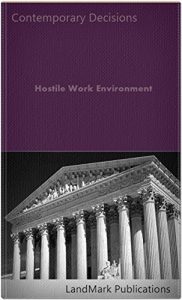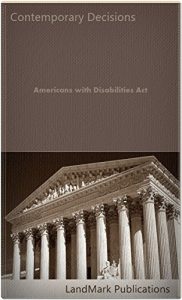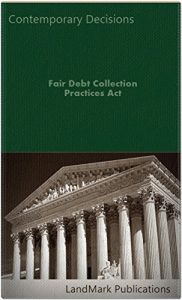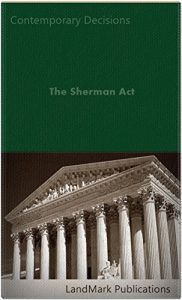THIS CASEBOOK contains a selection of 105 decisions of the U. S. Court of Appeals that analyze, discuss and interpret provisions of the Hatch-Waxman Act. The selection of decisions spans from 2001 to the date of publication.
The Drug Price Competition and Patent Term Restoration Act of 1984, Pub.L. No. 98-417, 98 Stat. 1585, commonly known as the Hatch-Waxman Act, stipulates the process by which pharmaceutical firms may gain approval from the Food and Drug Administration ("FDA") to bring medications to the public marketplace. The Supreme Court in Actavis identified "four key features of the relevant drug-regulatory framework" under the Hatch-Waxman Act. 133 S.Ct. at 2227-29. In Re Loestrin 24 FE Antitrust Litigation, 814 F. 3d 538 (1st Cir. 2016).
First, to market a new prescription drug, a brand-name drug manufacturer must submit a New Drug Application ("NDA") to the FDA and undergo a laborious and expensive approval process. 21 U.S.C. § 355(b)(1); see Actavis, 133 S.Ct. at 2228. Among other things, the NDA must include "the patent number and the expiration date of any patent which claims the drug . . . or which claims a method of using such drug." 21 U.S.C. § 355(b)(1). Upon receiving FDA approval, the brand manufacturer must publish a description of any patents associated with that drug in the Approved Drug Products with Therapeutic Equivalence Evaluations, commonly known as the Orange Book. See Caraco Pharm. Labs., Ltd. v. Novo Nordisk A/S, ___ U.S. ___, 132 S.Ct. 1670, 1676, 182 L.Ed.2d 678 (2012). In Re Loestrin 24 FE Antitrust Litigation, ibid.
Second, the Hatch-Waxman Act promotes the availability of cheaper generic alternatives by allowing generic drug manufacturers to bypass certain aspects of the NDA process. Instead of filing an NDA, a generic manufacturer may file a less cumbersome Abbreviated New Drug Application ("ANDA") "specifying that the generic has the 'same active ingredients as,' and is 'biologically equivalent' to, the already-approved brand-name drug." Actavis, 133 S.Ct. at 2228 (quoting Caraco Pharm. Labs., Ltd., 132 S.Ct. at 1676); 21 U.S.C. § 355(j)(2). But, "[b]ecause the FDA cannot authorize a generic drug that would infringe a patent, the timing of an ANDA's approval depends on the scope and duration of the patents covering the brand-name drug." Caraco Pharm. Labs., Ltd., 132 S.Ct. at 1676. In Re Loestrin 24 FE Antitrust Litigation, ibid.
. . .
The Drug Price Competition and Patent Term Restoration Act of 1984, Pub.L. No. 98-417, 98 Stat. 1585, commonly known as the Hatch-Waxman Act, stipulates the process by which pharmaceutical firms may gain approval from the Food and Drug Administration ("FDA") to bring medications to the public marketplace. The Supreme Court in Actavis identified "four key features of the relevant drug-regulatory framework" under the Hatch-Waxman Act. 133 S.Ct. at 2227-29. In Re Loestrin 24 FE Antitrust Litigation, 814 F. 3d 538 (1st Cir. 2016).
First, to market a new prescription drug, a brand-name drug manufacturer must submit a New Drug Application ("NDA") to the FDA and undergo a laborious and expensive approval process. 21 U.S.C. § 355(b)(1); see Actavis, 133 S.Ct. at 2228. Among other things, the NDA must include "the patent number and the expiration date of any patent which claims the drug . . . or which claims a method of using such drug." 21 U.S.C. § 355(b)(1). Upon receiving FDA approval, the brand manufacturer must publish a description of any patents associated with that drug in the Approved Drug Products with Therapeutic Equivalence Evaluations, commonly known as the Orange Book. See Caraco Pharm. Labs., Ltd. v. Novo Nordisk A/S, ___ U.S. ___, 132 S.Ct. 1670, 1676, 182 L.Ed.2d 678 (2012). In Re Loestrin 24 FE Antitrust Litigation, ibid.
Second, the Hatch-Waxman Act promotes the availability of cheaper generic alternatives by allowing generic drug manufacturers to bypass certain aspects of the NDA process. Instead of filing an NDA, a generic manufacturer may file a less cumbersome Abbreviated New Drug Application ("ANDA") "specifying that the generic has the 'same active ingredients as,' and is 'biologically equivalent' to, the already-approved brand-name drug." Actavis, 133 S.Ct. at 2228 (quoting Caraco Pharm. Labs., Ltd., 132 S.Ct. at 1676); 21 U.S.C. § 355(j)(2). But, "[b]ecause the FDA cannot authorize a generic drug that would infringe a patent, the timing of an ANDA's approval depends on the scope and duration of the patents covering the brand-name drug." Caraco Pharm. Labs., Ltd., 132 S.Ct. at 1676. In Re Loestrin 24 FE Antitrust Litigation, ibid.
. . .












